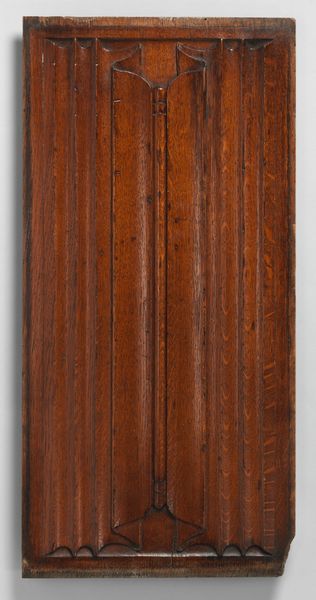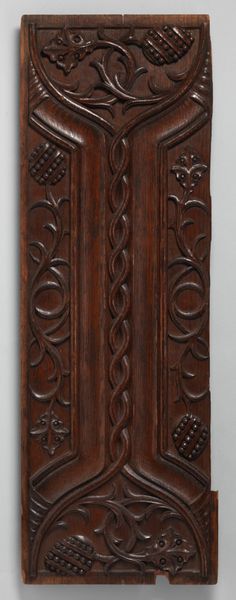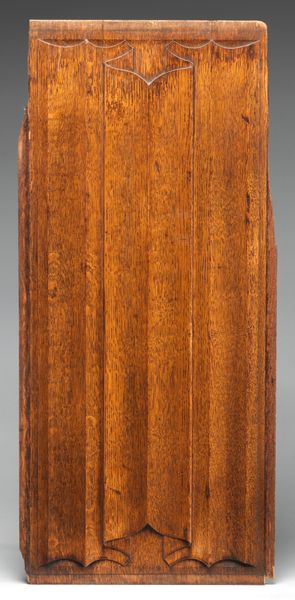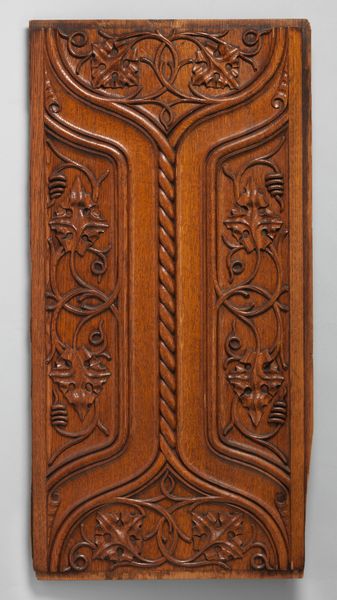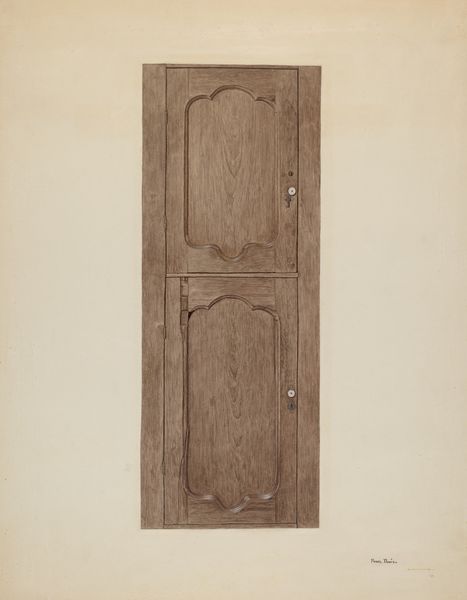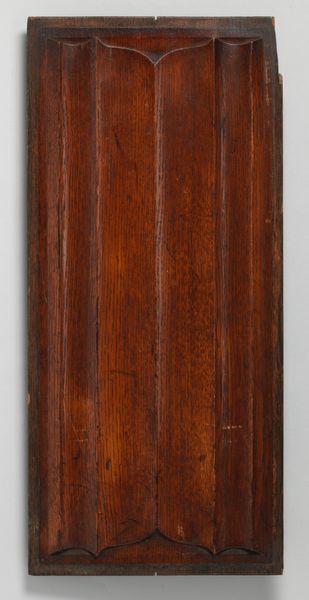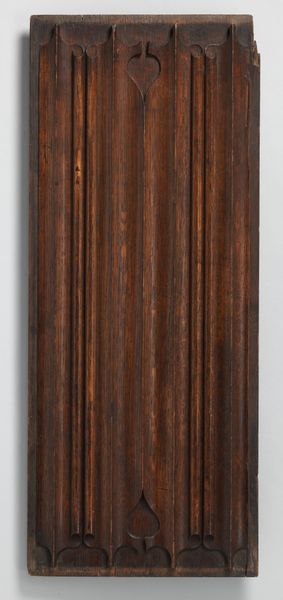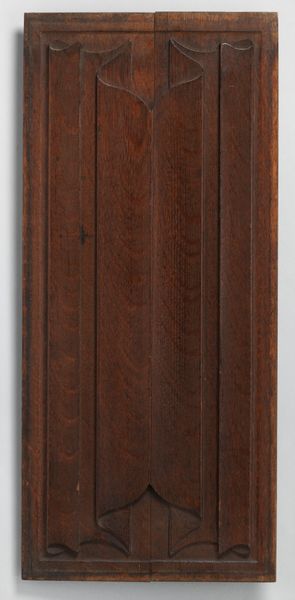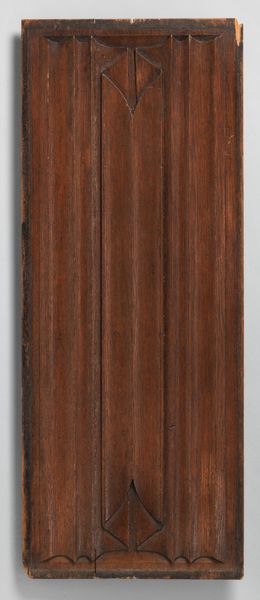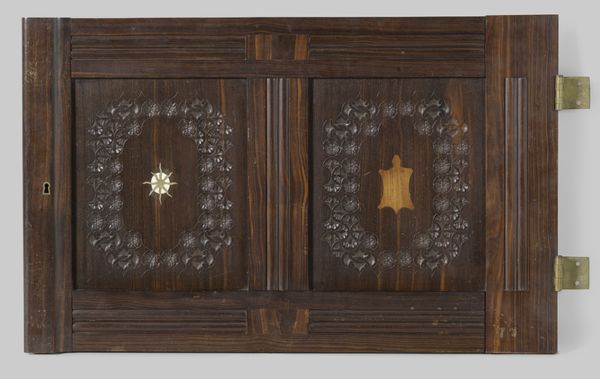
Archive collection of 22 panels from the Palace of Westminster 1840s - 1850s
0:00
0:00
Dimensions: See individual records
Copyright: Public Domain
Curator: What a marvel of craftsmanship! Here we have a collection of 22 panels, dating from the 1840s to 1850s, salvaged from the Palace of Westminster. They are attributed to Augustus Welby Northmore Pugin, a leading figure in the Gothic Revival movement. Editor: My first impression is one of rigid solemnity. The verticality is pronounced, creating an immediate sense of formality, enhanced by the dark, polished wood and the repeating patterns. Curator: Indeed. Pugin was deeply committed to the Gothic style, believing it embodied moral and spiritual values that were absent in contemporary design. Notice the use of pointed arches and floral motifs, which are quintessential elements of Gothic ornamentation. These evoke medieval grandeur, echoing the historical context Pugin so admired. The motifs, however stylized, draw on a rich tradition. Editor: The rhythm established by the vertical panels is broken only by these small, almost botanical medallions, interrupting the linear flow and serving as focal points, yet also furthering the formality, like seals of office along its length. How might this rhythm have informed the greater interior space? Curator: The Palace of Westminster was rebuilt after the fire of 1834, and Pugin designed many of the interior details. The repetition would have been part of a cohesive design plan throughout the halls of the building. It’s a tangible connection to a specific time, a particular artistic vision, and an entire political and cultural project. Editor: Interesting. Pugin masterfully manipulated form to impose his convictions. But for me, that severe order and dark material palette evokes a profound sense of power—power expressed as enduring architecture made for serious men. The symbolic order has great gravity! Curator: I see that too, absolutely. Pugin saw this as a way to revitalize society by embracing Christian principles through architecture and design. The weight of that endeavor rests in these details. Editor: A fascinating intersection of aesthetics and ideology. Thank you. Curator: It’s been my pleasure. A chance to glimpse the past and think on what it means for our time.
Comments
No comments
Be the first to comment and join the conversation on the ultimate creative platform.
